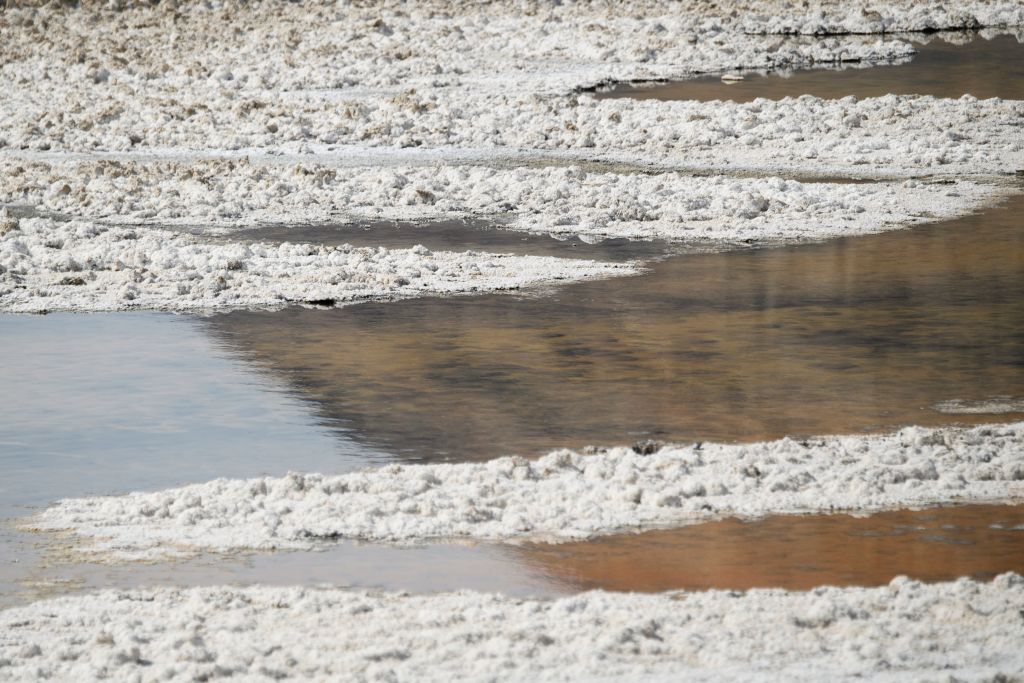(CNN) — After California experienced its driest year in nearly 100 years, the entire state is now under a drought emergency, authorities said Tuesday.
California Governor Gavin Newsom issued a statewide drought emergency declaration, expanding an existing one to add eight counties that were not previously included.
“As the western United States faces a potential third year of drought, it is critical that Californians across the state redouble their efforts to save water in every way possible,” the governor said in a statement.
The previous emergency declaration was expanded Tuesday to include Imperial, Los Angeles, Orange, Riverside, San Bernardino, San Diego, San Francisco and Ventura counties, according to a statement from the governor’s office.
The statewide emergency declaration allows the governor’s office to help fund the drought response and water supply.
A difficult year for California
California has had a difficult year, suffering from high temperatures and low rainfall. Both are factors that, combined with the existing climate change crisis, are contributing to a devastating wildfire season that has not ceased in months. The state is also experiencing its worst drought since the late 1800s, as measured by both a lack of rainfall and high temperatures, the governor’s office said.
The water year 2021 (which ran from October 1, 2020 to September 30, 2021) was the second driest in California according to state-level rainfall records, with 1924 being the driest, according to a report. from the state Department of Water Resources.
“The water year 2021 … was an extreme year in terms of temperature and precipitation, and it followed a water year 2020 that was equally hot and dry,” according to the report published in September.
“The Colorado River basin, a major supply for Southern California, remained dry in the water year 2021, and storage in Lakes Mead and Powell reached new all-time lows,” the report says.
The lakes are emptied
Lake Powell and nearby Lake Mead, the largest reservoir in the country, have emptied at an alarming rate this year. The two reservoirs, fed by the Colorado River basin, provide a critical supply of drinking and irrigation water for many people in the region, including rural farms, ranches, and native communities.
By the end of July, Lake Powell had dropped to around 108 meters (just 33% of its capacity), according to the US Reclamation Office, below the previous all-time low set in 2005.
And in August, the federal government declared water shortages in the Colorado River for the first time, prompting mandatory cuts in water use for southwestern states, including California, Arizona and Nevada.
Since last week, the entire state of California has been under some form of drought, with some areas experiencing more extreme conditions than others, according to data from the US Drought Monitor.
With more than 45% of the state in the most extreme level of drought conditions, wildfires have become commonplace, razing hundreds of homes and businesses and burning vast amounts of land.
Fires add to drought in California
California firefighters have seen more than 8,000 fires this year, burning 1,009,761 acres so far, according to Cal Fire data. Currently, they face eight major active wildfires in the state, according to the National Interagency Fire Center.
Santa Barbara County crews recently faced high winds while battling the Alisal fire, which at one point burned near a ranch owned by former President Ronald Reagan.
The fire, which devastated more than 6,800 hectares, was 97% contained Tuesday, according to county authorities. Shortly after the fire broke out, authorities were forced to shut down part of Highway 101 and the Amtrak railways in the area; they have since reopened. The cause of the fire is under investigation.
Further north, the KNP Complex fire damaged parts of Redwood Canyon, which is home to one of the largest redwood forests, as well as old-growth redwood trees. Hundreds of those trees are believed to have been burned in that fire, which was started by lightning last month. The fire has grown to more than 35,000 hectares, with 55% containment as of Tuesday, according to fire officials.
And in July, crews began fighting what is now the state’s second-largest wildfire in history, the Dixie Fire, which destroyed more than 1,300 structures as it burned across nearly 390,000 acres. This Wednesday morning it was 95% contained, according to those responsible for the fire.
–


